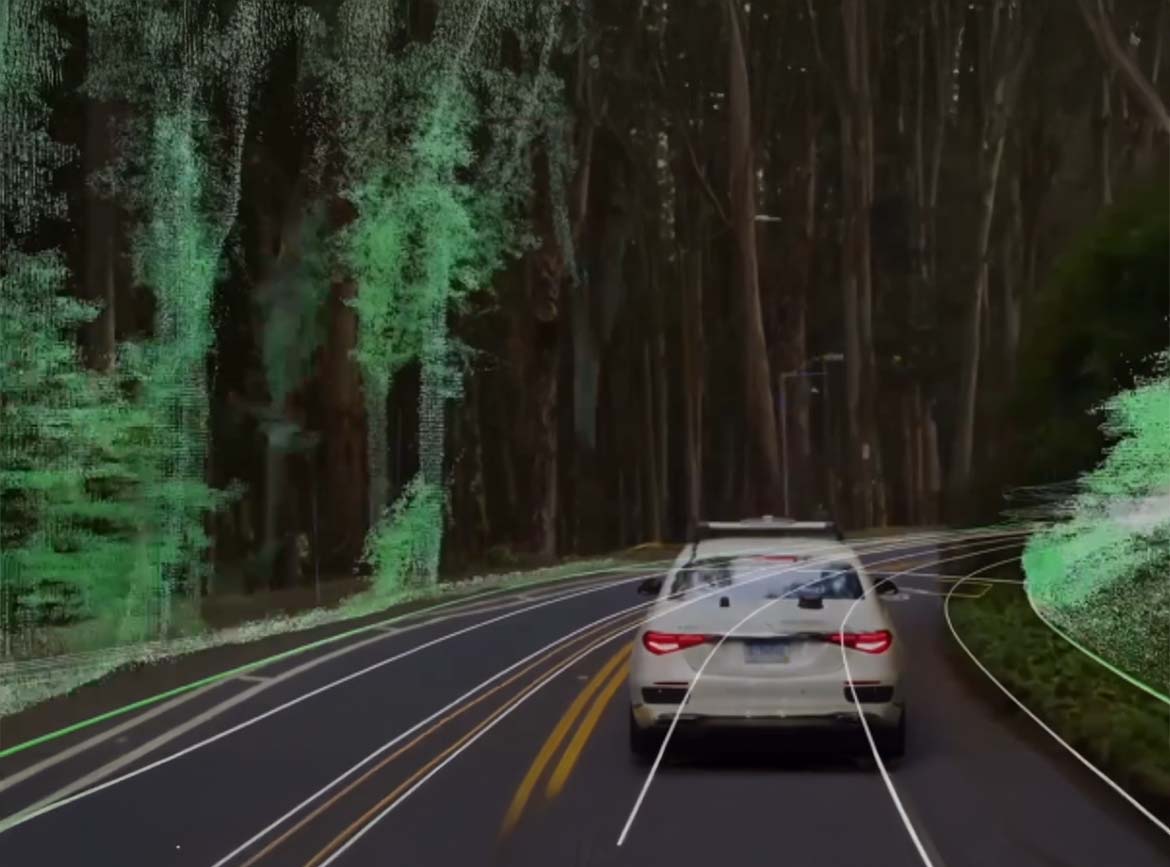NVIDIA and Nuro Optimize Autonomous Driving with Real-Time 3D and AI
Photo: © Ulrich Buckenlei | Nuro’s autonomous vehicle powered by NVIDIA technology.
AI and Real-Time 3D: Advancing Autonomous Driving
The development of autonomous driving systems requires a seamless integration of artificial intelligence, sensor fusion, and virtual training methods. NVIDIA and Nuro rely on a combination of real-time 3D visualization, machine learning, and high-performance hardware to enhance the safety and efficiency of autonomous vehicles.
- High-Precision Sensor Data: Fusion of LiDAR, camera, and radar data for detailed environmental perception.
- Virtual Training: Use of NVIDIA Cosmos for realistic simulations and AI-assisted driving decisions.
- Real-Time Processing: Utilizing the NVIDIA DRIVE AGX Thor™ platform to analyze traffic situations in real time.

Nuro’s Autonomous Vehicle with NVIDIA Technology
Photo: © Ulrich Buckenlei | Autonomous navigation through advanced sensor fusion.
AI-Powered Optimization of Vehicle Navigation
Nuro’s Neural Driver System utilizes AI-driven sensor fusion to interpret complex road situations in real time. By leveraging neural networks, the vehicle can make independent driving decisions and adapt to changing conditions.
- Neural Networks: Real-time image processing for identifying obstacles and road markings.
- Adaptive Driving Strategy: AI-based analysis of traffic flow and pedestrian behavior.
- Redundant Safety Systems: Automatic detection and risk assessment of critical driving situations.

Virtual Training Environments
Photo: © Ulrich Buckenlei | NVIDIA Cosmos enables risk-free AI training in virtual 3D worlds.
Simulations to Improve AI Models
A key innovation is the increased use of 3D simulation environments. With NVIDIA Cosmos, autonomous vehicles can run through millions of scenarios in a virtual environment before entering real-world traffic.
- Scalability: Parallel testing of various driving scenarios.
- Fine-Tuning: Continuous optimization of reaction times and decision-making processes.
- Risk Minimization: Reducing accidents through AI training in safe, simulated environments.

AI Training with NVIDIA GPUs
Photo: © Ulrich Buckenlei | High-performance data centers train algorithms in the cloud.
The Evolution of Autonomous Driving Technology
Autonomous vehicles go through various stages of development, from basic driver assistance systems to fully automated driving systems. The following diagram illustrates the key milestones of this technological evolution.
- SAE Level 2: Driver assistance systems with partial automation.
- SAE Level 3: Highly automated driving functions in defined environments.
- SAE Level 4: Autonomous mobility with limited human intervention.

Technological Development of Autonomous Driving Systems
Diagram: The step-by-step evolution of autonomous driving from assistance systems to fully autonomous AI models.
Video: NVIDIA & Nuro – Advances in Autonomous Mobility
This video explains how NVIDIA and Nuro optimize autonomous driving using real-time 3D and AI.
Advancements in Autonomous Driving
Video: NVIDIA and Nuro showcase the latest developments in AI-powered mobility.
Invitation to Collaborate
Visoric helps companies leverage modern AI technologies for autonomous systems, 3D visualization, and digital twins.
- Strategic Consulting: Efficient use of AI in autonomous systems.
- Technology Integration: Implementation of cutting-edge AI and 3D models.
- Simulation & Training: Development of safe and efficient virtual test environments.
Contact us and step into the future of autonomous mobility with us!
Contact Us:
Email: info@xrstager.com
Phone: +49 89 21552678
Contact Persons:
Ulrich Buckenlei (Creative Director)
Mobil +49 152 53532871
Mail: ulrich.buckenlei@xrstager.com
Nataliya Daniltseva (Projekt Manager)
Mobil + 49 176 72805705
Mail: nataliya.daniltseva@xrstager.com
Address:
VISORIC GmbH
Bayerstraße 13
D-80335 Munich


